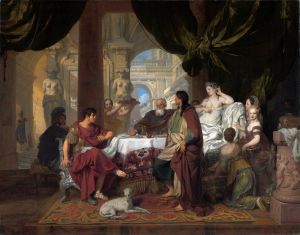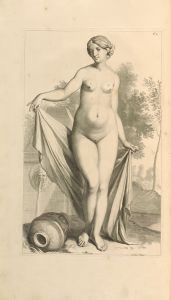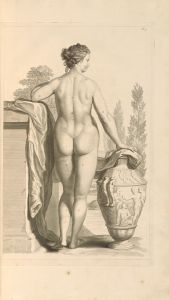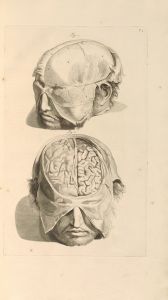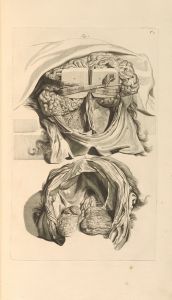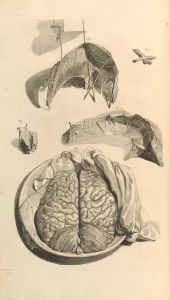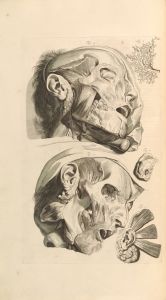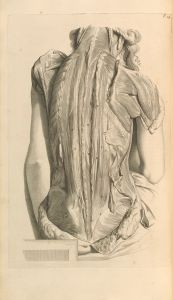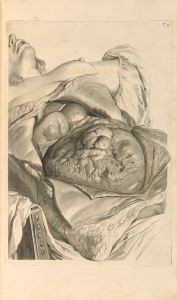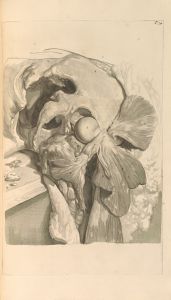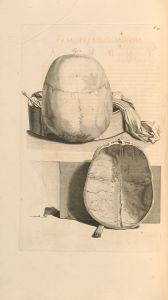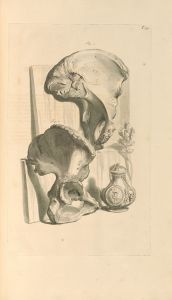
Anatomia humani corporis Pl.085
A hand-painted replica of Gerard de Lairesse’s masterpiece Anatomia humani corporis Pl.085, meticulously crafted by professional artists to capture the true essence of the original. Each piece is created with museum-quality canvas and rare mineral pigments, carefully painted by experienced artists with delicate brushstrokes and rich, layered colors to perfectly recreate the texture of the original artwork. Unlike machine-printed reproductions, this hand-painted version brings the painting to life, infused with the artist’s emotions and skill in every stroke. Whether for personal collection or home decoration, it instantly elevates the artistic atmosphere of any space.
Anatomia humani corporis Pl.085 is an anatomical illustration created by the Dutch Golden Age painter and draughtsman Gerard de Lairesse. This artwork is part of a larger collection of anatomical drawings that were published in the book "Anatomia Humani Corporis," which was a significant contribution to the field of anatomy during the late 17th century. The book was authored by the renowned Dutch anatomist Govard Bidloo and first published in 1685.
Gerard de Lairesse, born in 1641 and died in 1711, was a prominent artist known for his classical and Baroque style paintings. Despite his eventual blindness later in life, de Lairesse's early works, including his anatomical illustrations, were highly detailed and meticulously executed. His collaboration with Govard Bidloo on "Anatomia Humani Corporis" is one of his most notable contributions to both art and science.
The illustration Pl.085, like the other plates in the book, is characterized by its precise and detailed depiction of human anatomy. De Lairesse's work in this collection was instrumental in providing a visual aid for medical students and professionals of the time, enhancing their understanding of the human body's structure. The illustrations in "Anatomia Humani Corporis" were groundbreaking for their accuracy and artistic quality, setting a new standard for anatomical drawings.
"Anatomia Humani Corporis" consists of 105 plates, each illustrating different parts and systems of the human body. The collaboration between Bidloo and de Lairesse was significant because it combined the expertise of a skilled anatomist with the talent of a master artist, resulting in illustrations that were not only scientifically accurate but also aesthetically pleasing. This combination helped bridge the gap between art and science, making the study of anatomy more accessible and engaging.
The book was published in Amsterdam, a center of scientific and artistic innovation during the Dutch Golden Age. The detailed engravings were produced by Abraham Blooteling, a renowned engraver of the time, who translated de Lairesse's drawings into prints. The high quality of these engravings contributed to the book's success and its lasting impact on the field of anatomy.
"Anatomia Humani Corporis" was well-received and widely used in medical education. Its influence extended beyond the Netherlands, reaching scholars and medical practitioners across Europe. The detailed and accurate illustrations provided a valuable resource for understanding human anatomy, and the book remained a reference for many years.
In summary, Anatomia humani corporis Pl.085 by Gerard de Lairesse is a significant anatomical illustration from the late 17th century, part of the influential book "Anatomia Humani Corporis" authored by Govard Bidloo. The collaboration between de Lairesse and Bidloo resulted in a collection of detailed and accurate anatomical drawings that played a crucial role in the advancement of medical education and the study of human anatomy.





